Disclosure: This article contains affiliate links. We may earn a commission from purchases at no extra cost to you, which helps our travel content.
The first time I glimpsed Bora Bora's electric blue lagoon from my airplane window, I knew the standard overwater bungalow experience wouldn't be enough to satisfy my explorer's heart. As a game developer who specializes in creating immersive digital ecosystems, I'm constantly drawn to environments where natural beauty and adventure intersect in the physical world. Bora Bora delivers this intersection with breathtaking abundance. While most visitors come for the iconic stilted accommodations (which are indeed magical), the island offers a treasure trove of outdoor adventures that showcase its ecological diversity beyond the expected postcard views. After three visits to this French Polynesian paradise, I've compiled my favorite thrilling activities that balance luxury experiences with environmental appreciation. Whether you're traveling with adventure-seeking friends or looking to elevate a group getaway, these ten experiences will transform your Bora Bora journey from merely photogenic to genuinely transformative.
1. Snorkeling with Gentle Giants: Manta Rays & Reef Sharks
There's something profoundly humbling about floating silently as a massive manta ray—wingspan easily exceeding six feet—glides beneath you with balletic grace. Bora Bora's crystal-clear lagoon hosts these gentle giants year-round, though my July visit coincided with what locals called 'peak manta season.'
My favorite experience came through a private guided excursion with Reef Discovery, a locally-owned operation committed to responsible marine encounters. Unlike larger group tours that can overwhelm wildlife, our small boat allowed for intimate, unhurried observation. Our Tahitian guide, Tehani, possessed encyclopedic knowledge of manta behavior and feeding patterns, positioning us perfectly to witness their mesmerizing feeding spirals without disrupting their natural rhythms.
The same excursion included a drift snorkel along the coral gardens near the reef edge where blacktip reef sharks patrol with surprising indifference to human observers. The contrast between their sleek, purposeful movements and the mantas' undulating grace created a perfect ecological counterpoint.
For underwater documentation, my underwater camera captured stunning footage without requiring professional photography skills. The stabilization features proved invaluable in the gentle current, and the wide-angle perspective perfectly framed these magnificent creatures against the sunlit turquoise backdrop. Just remember to use reef-safe sunscreen to protect the very ecosystem you've come to admire.

💡 Pro Tips
- Book a morning snorkel tour when the water visibility is typically best and marine life most active
- Choose operators who emphasize small groups and sustainable practices
- Bring a rash guard to avoid excessive sunscreen use in sensitive reef environments
2. Conquering Mount Otemanu: Guided Hiking Adventures
While Bora Bora's lagoon rightfully commands attention, the island's dramatic volcanic heart—Mount Otemanu—offers an entirely different perspective for those willing to venture inland. Rising 2,385 feet from the island's center, this ancient volcanic remnant isn't for casual strollers, but the rewards justify every challenging step.
After researching extensively, I chose Bora Bora Hiking Tours for their expertise in navigating the mountain's notoriously rugged terrain. Our guide, Maui, descended from generations of Polynesian pathfinders and shared ancestral stories that transformed our hike into a cultural journey as much as a physical one.
The trail alternates between dense tropical forest sections, where endemic birds flit between flowering plants I recognized from my game development research, and exposed rocky portions requiring careful footing. While the summit itself is technically unattainable due to crumbling rock, our journey to the accessible high point—approximately three-quarters up the mountain—provided panoramic views that recontextualized the island's geography. From this vantage, the famous lagoon resembles an artist's palette of blues, with overwater bungalows appearing as tiny matchsticks against the vast Pacific canvas.
Prepare for this adventure with appropriate gear. My hiking shoes provided essential traction on varied terrain, from muddy forest floors to volcanic scree. The waterproof feature proved invaluable during a brief tropical shower that enhanced, rather than dampened, our experience.
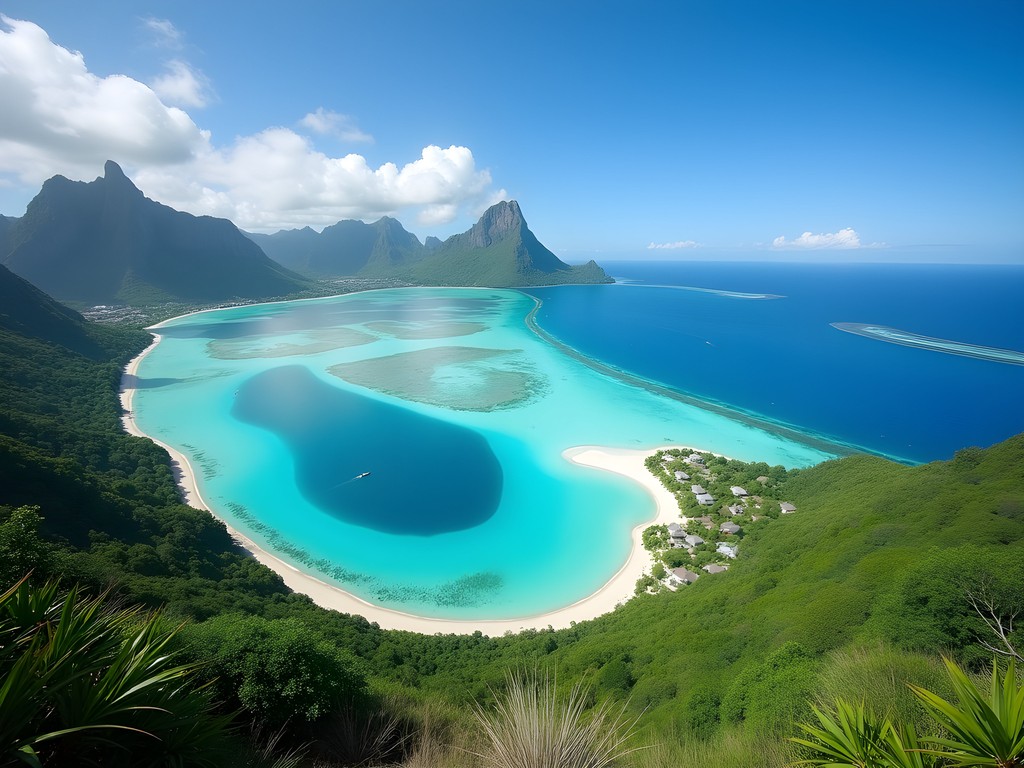
💡 Pro Tips
- Start early (6:00-7:00 AM) to avoid midday heat and catch optimal lighting for photos
- Pack at least 2 liters of water per person—the humidity makes hydration critical
- Bring a lightweight rain shell as mountain weather can change rapidly regardless of coastal conditions
3. Lagoon Botanizing: Guided Kayak Expeditions
For someone whose passion for botanical exploration drives much of my travel, Bora Bora initially seemed focused primarily on marine ecosystems. That misconception dissolved during my guided kayak expedition through the lagoon's lesser-visited eastern shores and hidden motus (small islands).
I partnered with Bora Bora Eco Tours for a full-day paddling journey that balanced physical activity with naturalist insights. Our guide, Heimata, possessed remarkable knowledge of both aquatic and terrestrial ecosystems, pointing out subtle interactions I would have otherwise missed entirely.
Paddling transparent kayaks—a delightful upgrade from standard models—we traversed shallow coral gardens where Heimata identified various species by their growth patterns and coloration. But the botanical highlight came during our stops on remote motus, where we explored coastal vegetation zones ranging from salt-tolerant pioneers to interior fruit-bearing species. I was fascinated by the traditional Polynesian uses of plants like noni, whose fruit serves medicinal purposes despite its infamously pungent odor.
One particularly magical moment occurred in a protected cove where freshwater seeps create a unique brackish microenvironment. Here, unusual plant adaptations demonstrate evolution's creativity in challenging conditions. As a game developer who's digitally recreated ecosystems, witnessing these real-world adaptive strategies provided invaluable inspiration.
For this full-day water adventure, my dry bag protected camera equipment and botanical notes while allowing easy access throughout the journey. The transparent window feature proved particularly useful for checking my phone without removing it from protection.

💡 Pro Tips
- Choose transparent kayaks when available—they transform paddling into a moving reef observation platform
- Bring polarized sunglasses to reduce water glare and enhance underwater visibility
- Request motu stops with a focus on native vegetation if botanical interests drive your travel
4. Twilight Lagoon Safari: Electric Ray Encounters
While daytime adventures showcase Bora Bora's famous blues, the lagoon transforms as sunset approaches, revealing nocturnal marine behaviors few visitors witness. The Twilight Lagoon Safari with Moana Adventure Tours offers this rare window into the transition between day and night ecosystems.
Our expedition began 90 minutes before sunset in a comfortable covered boat with underwater lights. As daylight faded, our captain navigated to specific locations where bioluminescent organisms and crepuscular marine species become active. The highlight—and what distinguishes this experience from standard excursions—was our encounter with electric rays.
These fascinating creatures, smaller cousins of the massive mantas seen during daytime snorkels, emerge at dusk to hunt along sandy bottoms. With specialized equipment, our marine biologist guide demonstrated the rays' electrical field capabilities without causing stress to the animals. Watching the scientific instrument register the gentle pulses produced by these elegant creatures provided a rare intersection of scientific discovery and natural wonder.
As complete darkness descended, we drifted over a coral section known for bioluminescent plankton. With engines off and only the ambient glow of stars above, we trailed our hands through water that sparkled like liquid constellations—a moment of pure magic that digital screens simply cannot capture.
For this twilight adventure, I was grateful for my underwater flashlight. While the tour provides basic lighting, having my own adjustable beam allowed me to spotlight specific underwater features without disrupting the overall experience for others in the group.
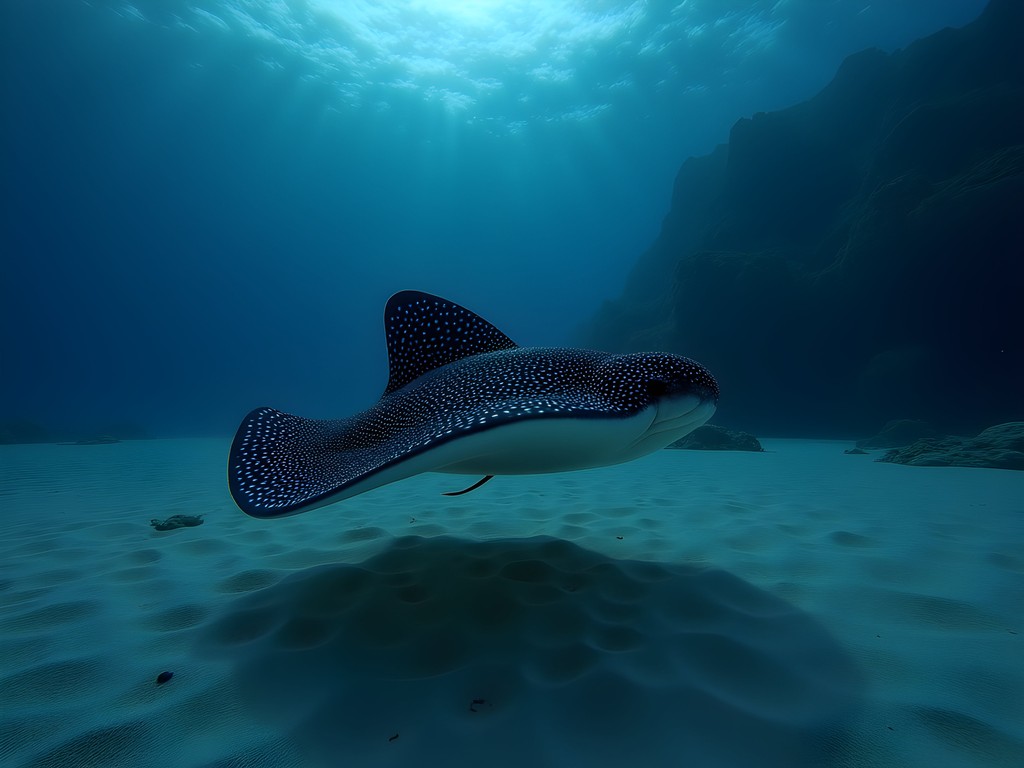
💡 Pro Tips
- Bring a light sweater as temperatures drop surprisingly quickly after sunset on the water
- Consider motion sickness remedies even if you don't typically need them—the combination of low light and water movement affects equilibrium differently
- Request seats away from the engine for optimal viewing and photography opportunities
5. Outrigger Sailing: Traditional Polynesian Navigation
In an age of GPS and digital navigation, experiencing Bora Bora's waters through traditional Polynesian sailing methods offers both adventure and profound cultural connection. The Polynesian Outrigger Experience with Lagoon Service isn't merely a scenic boat ride but an immersive journey into the navigational practices that enabled one of history's greatest migration stories.
Our vessel, a traditionally crafted outrigger sailing canoe accommodating eight passengers, combined historical design with modern safety standards. Our captain, Teva, descended from a lineage of navigators who once traversed thousands of ocean miles using only stars, currents, and natural patterns as guides.
What elevated this experience beyond typical tourist offerings was Teva's willingness to share authentic navigational knowledge. He demonstrated how to read wave patterns reflecting off distant motus, identify subtle current changes by observing floating debris behavior, and recognize cloud formations that indicate nearby land masses—techniques his ancestors used to discover and settle islands across the vast Pacific.
We took turns helping manage the sail and steering paddle under Teva's patient guidance, gaining appreciation for the physical skill involved in traditional navigation. The journey circumnavigated Bora Bora's main island, providing constantly shifting perspectives of Mount Otemanu from various angles that few visitors experience.
For this cultural sailing adventure, my polarized sunglasses proved essential not just for comfort but for actually seeing the subtle water patterns Teva pointed out. The polarization revealed underwater features and current movements that would otherwise remain invisible—a small taste of the observational advantages traditional navigators developed through generations of experience.

💡 Pro Tips
- Book this experience early in your trip—the navigational insights will enhance how you perceive the island throughout your stay
- Wear quick-dry clothing as occasional spray is inevitable on the outrigger canoe
- Ask respectful questions about cultural practices—most Polynesian guides appreciate genuine interest in their heritage
6. Jet Ski Circumnavigation: Adrenaline Meets Exploration
For those seeking to balance luxury indulgence with adventure thrills, Bora Bora's complete circumnavigation via jet ski delivers an exhilarating perspective of the island impossible to achieve by any other means. After researching various operators, I selected Moana Adventure Tours for their well-maintained equipment and emphasis on both safety and environmental responsibility.
Unlike shorter jet ski excursions that remain within the calm lagoon, this three-hour journey includes passages through reef openings where lagoon meets open ocean—creating moments of genuine excitement as you navigate choppier waters before returning to placid turquoise expanses. Our guide, Manu, expertly balanced thrill-seeking opportunities with educational stops, allowing us to open the throttle in appropriate zones while respecting sensitive marine areas.
The circumnavigation's true value comes from experiencing Bora Bora's remarkable diversity of coastlines and water conditions. The western side reveals luxury resorts and manicured beaches, while the less-developed eastern shore presents a wilder aspect with dramatic cliffs where Mount Otemanu meets the sea. We paused at strategic viewpoints impossible to access by land, including a hidden cove where Manu pointed out a rare colony of seabirds nesting in protected cliff faces.
A particular highlight came when we cut engines in a remote section of the lagoon. The sudden silence, broken only by gentle water movement against our vessels, created a meditative moment as we floated above coral gardens with Mount Otemanu perfectly framed between two distant motus—a perspective straight from my game designer's imagination but infinitely more vivid in reality.
For this adventurous excursion, I was grateful for my waterproof phone case which allowed worry-free photography throughout the journey, even during more adventurous open-water sections where splashing was inevitable.

💡 Pro Tips
- Apply waterproof sunscreen 30 minutes before departure—wind and water reflection intensify sun exposure dramatically
- Request the circumnavigation direction that places the sun behind you during the most scenic portions (typically counterclockwise in morning, clockwise in afternoon)
- Wear water shoes rather than flip-flops for better stability when stopping at shallow reef sections
7. Aqua Safari Helmet Diving: Walking with the Fishes
For those intrigued by underwater exploration but hesitant about snorkeling or diving equipment, Bora Bora's Aqua Safari offers a uniquely accessible alternative that doesn't compromise on marine encounter quality. This innovative experience uses clear helmets supplied with surface air, allowing participants to walk along the lagoon floor while keeping their heads completely dry—hair, makeup, and glasses remain untouched.
I'll admit initial skepticism about this seemingly tourist-oriented activity, but my game developer's curiosity about different perspectives won out. I'm genuinely glad it did. The experience provides a distinctly different viewpoint from traditional snorkeling or diving—the slower, deliberate movement creates a contemplative quality as you observe marine life from their level rather than from above.
Our marine biologist guide, Sophie, accompanied us underwater, using a magnetic writing board to identify species and explain behavioral patterns we witnessed. The helmet's design eliminates the need for equalization, making this experience available to almost anyone regardless of swimming ability or comfort with traditional underwater breathing apparatus.
The most magical moment came when Sophie produced a handful of approved fish food, triggering a kaleidoscopic gathering of tropical species around our small group. Standing immobile as angelfish, butterflyfish, and parrotfish darted around my legs at eye level created an intimacy with marine life I hadn't expected from this seemingly simple activity.
While professional underwater photographers document your experience, I found having my own waterproof action camera invaluable for capturing spontaneous moments between the scheduled photo opportunities. Its compact size proved perfect for one-handed operation without disrupting the serene underwater experience.

💡 Pro Tips
- Wear dark-colored swimwear—brightly colored suits can sometimes deter certain fish species
- Apply minimal or no sunscreen before this activity as you'll be washing it off in the rinse shower immediately before entering the water
- Request to be among the first or last participants in your group—this timing often coincides with the most interesting fish activity
8. Sunset Outrigger Whale Watching: Seasonal Majesty
While Bora Bora's lagoon justifiably captivates visitors, the open ocean beyond the reef offers seasonal wildlife encounters of breathtaking magnitude. From August through October, humpback whales migrate through French Polynesian waters, and witnessing these magnificent creatures against Bora Bora's dramatic silhouette creates unforgettable memories.
After researching various options, I selected Bora Bora Moana Adventure for their conservation-focused approach and traditional outrigger vessels that create minimal disruption compared to larger, engine-heavy boats. Our guide, Heimana, combined scientific knowledge with cultural reverence for these creatures, whom Polynesians have long considered sacred ocean guardians.
Departing two hours before sunset, we navigated through the reef pass into open water where Heimana identified promising signs—particular bird activities and subtle water movements that often indicate whale presence. After 40 minutes of patient searching, our vigilance was rewarded with distant spouts illuminated by golden hour light.
Approaching respectfully at the distance required by Polynesian conservation regulations, we witnessed a mother and calf performing what Heimana described as social training—the adult demonstrating breaching techniques the younger whale attempted to mimic with endearing awkwardness. The sunset backdrop transformed this already moving scene into something almost mythical, the whales' massive forms backlit by crimson and gold as Mount Otemanu created a perfect silhouette.
Unlike daytime whale watches where photography often dominates the experience, the sunset timing naturally encouraged our small group toward quiet appreciation. As darkness approached and we reluctantly returned through the reef pass, the lagoon's famous bioluminescence activated around our wake—nature providing one final touch of magic to an already perfect evening.
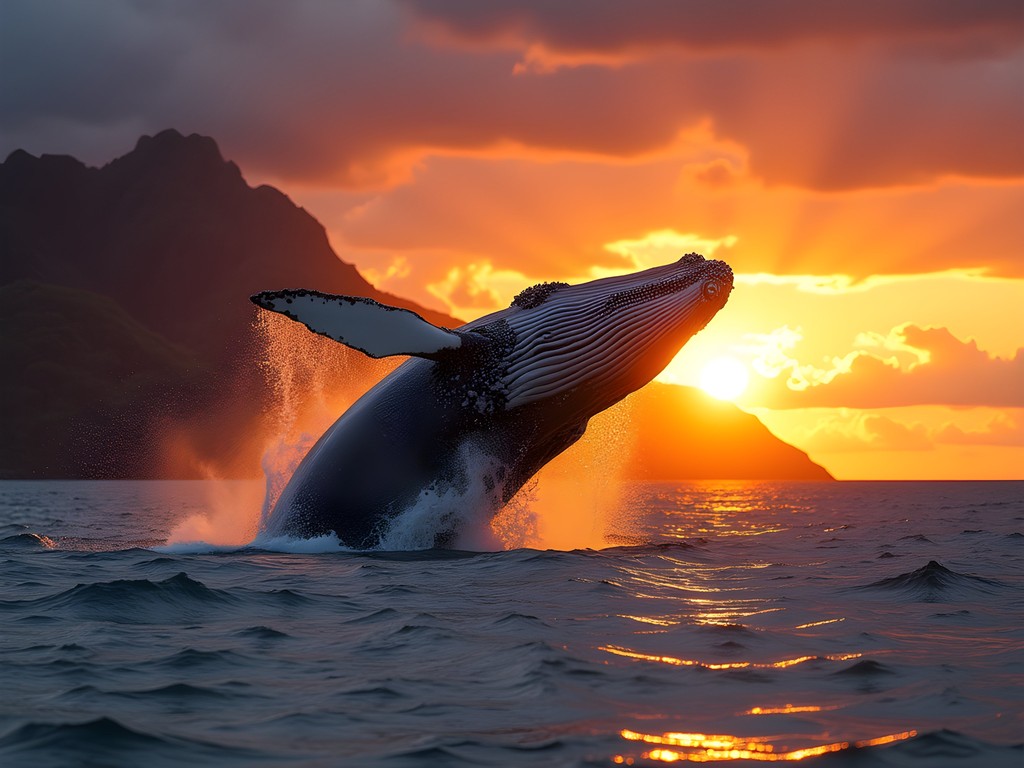
💡 Pro Tips
- Book this seasonal activity in advance—spaces fill quickly during whale migration months (August-October)
- Take motion sickness precautions even if you don't typically need them; open ocean conditions differ significantly from lagoon experiences
- Bring layers as temperatures drop quickly after sunset, especially on the return journey
9. Lagoon Eco-Tour: Conservation in Paradise
As a traveler deeply committed to environmental sustainability, I sought experiences that would deepen my understanding of Bora Bora's fragile ecosystems and conservation challenges. The Lagoon Eco-Tour with Bora Bora Lagoonarium exceeded my expectations by combining education with hands-on conservation activities suitable for groups of all ages and backgrounds.
Led by marine biologist Dr. Claire Bertrand, our half-day excursion began with a comprehensive overview of the lagoon's ecological significance and the threats it faces from climate change, tourism pressure, and invasive species. Rather than dwelling solely on challenges, Dr. Bertrand balanced concerns with success stories from local conservation initiatives.
The tour's hands-on component involved participation in the lagoon's coral restoration project. After thorough instruction, our group helped prepare coral fragments for the underwater nursery where they'll grow before transplantation to damaged reef sections. The tangible contribution to Bora Bora's ecosystem health provided satisfaction beyond typical tourist experiences.
The most insightful portion came during our guided snorkel through restoration zones in various stages of recovery. Seeing firsthand the progression from newly transplanted coral fragments to thriving five-year-old restoration sites demonstrated conservation's positive potential when properly supported. Dr. Bertrand pointed out indicator species whose presence signals ecosystem health, teaching us to recognize signs of reef vitality beyond mere aesthetic beauty.
For this conservation-focused experience, I appreciated having my reef-safe sunscreen which aligned with the tour's environmental values. Unlike many products marketed as 'reef-friendly,' this truly reef-safe formulation lacks the oxybenzone and octinoxate that damage coral reproduction systems—a small choice with meaningful impact when multiplied across thousands of visitors.

💡 Pro Tips
- Book this tour early in your trip to gain ecological insights that will enhance subsequent water activities
- Bring a notebook in a waterproof case to record conservation information—the knowledge shared is substantial
- Consider making a direct donation to the coral restoration project; funds go directly to materials and scientific monitoring
10. Stargazing Outrigger Expedition: Polynesian Celestial Navigation
For my final recommended adventure, I invite you to look upward rather than underwater. Bora Bora's minimal light pollution and remote Pacific location create ideal conditions for celestial observation, particularly when combined with the rich astronomical traditions of Polynesian wayfinding culture.
The Stargazing Outrigger Expedition with Bora Bora Astronomical Society departs after dinner, taking small groups aboard a traditional-style outrigger canoe equipped with comfortable cushions but minimal artificial lighting. Our guide, Marama, represented the perfect intersection of scientific astronomy and cultural knowledge, having studied both modern astrophysics and traditional Polynesian celestial navigation from community elders.
After motoring to a carefully selected location far from resort lights, the engines were silenced, and we drifted gently as our eyes adjusted to the darkness. The reveal of the night sky happened gradually—first major constellations, then the Milky Way's cloudy band, and finally thousands of stars typically invisible to urban dwellers.
What elevated this beyond standard stargazing was Marama's dual narrative approach. For each celestial feature, she provided both the scientific explanation and the Polynesian navigational significance. We learned how traditional wayfinders used specific star paths as maritime highways, memorizing their seasonal movements to navigate thousands of ocean miles without instruments.
The experience culminated with a demonstration of traditional position-finding techniques using only the stars and simple hand measurements. As Marama helped each participant locate our precise position on Earth using these ancient methods, I felt a profound connection to generations of Polynesian navigators who mastered these techniques through careful observation and cultural knowledge transmission.
For this nighttime adventure, my compact binoculars dramatically enhanced star cluster and nebula visibility without requiring specialized astronomical equipment or photography skills. Their light-gathering capability revealed celestial details invisible to the naked eye while remaining portable enough for travel.

💡 Pro Tips
- Check the lunar calendar before booking—new moon periods offer the darkest skies and best viewing conditions
- Bring a light jacket even in summer; nighttime temperatures on water can drop surprisingly low
- Take motion sickness remedies if sensitive—focusing on stars while on a gently moving boat can trigger discomfort even in calm conditions
Final Thoughts
Bora Bora's reputation for romantic luxury is well-deserved, but limiting yourself to overwater bungalow lounging means missing the island's deeper magic. These ten adventures reveal a more complex paradise—one where ecological wonder, cultural depth, and adrenaline-pumping experiences complement the famous turquoise waters and luxurious accommodations. As a game developer who digitally recreates ecosystems, I've found that Bora Bora's real-world environments offer inspiration no simulation could match, from coral gardens teeming with chromatic fish to ancient volcanic slopes hosting endemic botanical treasures. Whether you're traveling with adventure-seeking friends or looking to balance relaxation with exploration, these experiences create memories that will remain vivid long after your overwater bungalow becomes a blurry Facebook memory. The true luxury of Bora Bora isn't found in thread counts or infinity pools, but in immersive moments that connect you to one of Earth's most spectacular environments and the Polynesian culture that has stewarded it for generations. When will you venture beyond the bungalow?
✨ Key Takeaways
- Bora Bora offers adventure experiences for all skill levels, from gentle helmet diving to challenging Mount Otemanu hikes
- Conservation-focused activities provide meaningful ways to contribute to the island's ecological health while enjoying its beauty
- Cultural experiences like traditional navigation and celestial wayfinding add intellectual depth to the physical beauty of the destination
📋 Practical Information
Best Time to Visit
May-October (dry season), with August-October ideal for whale watching
Budget Estimate
$800-1,200 per day including luxury accommodation and premium activities
Recommended Duration
7-10 days
Difficulty Level
Intermediate (Activities Can Be Tailored To Various Fitness Levels)



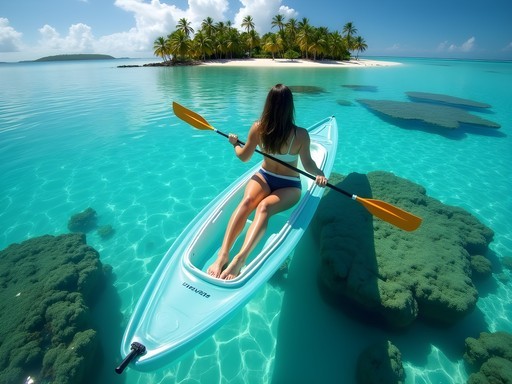


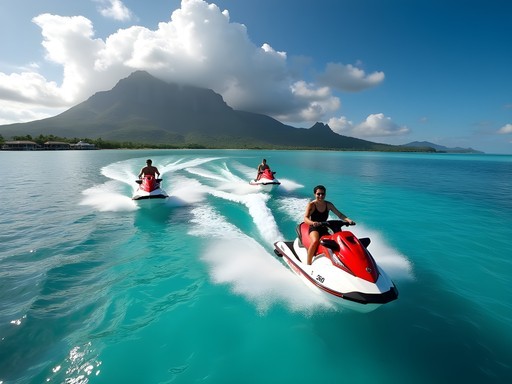


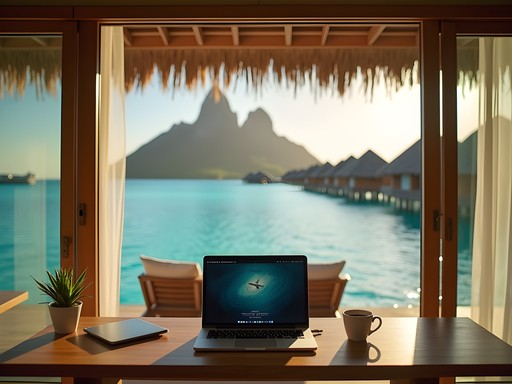
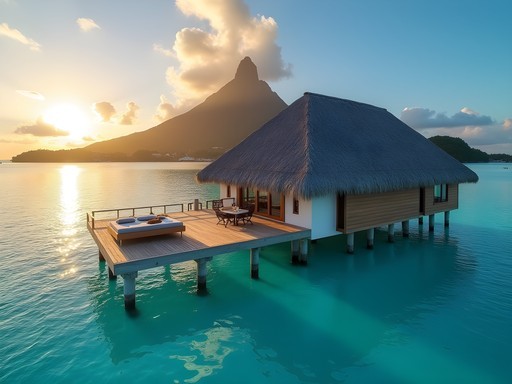

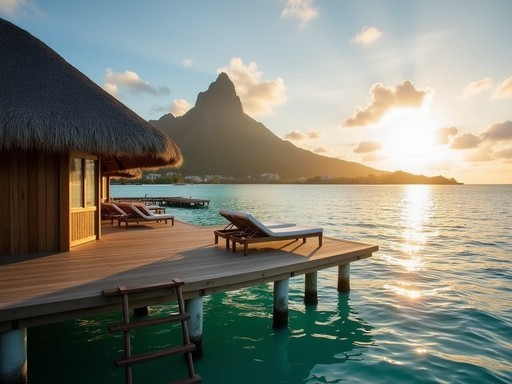
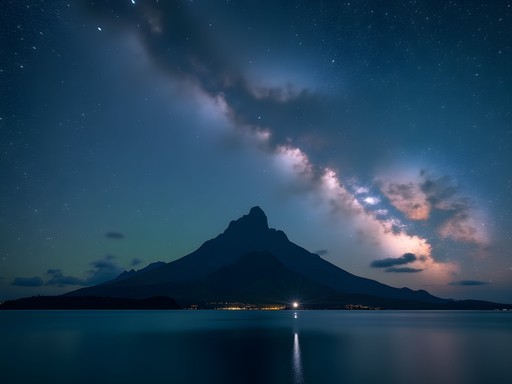
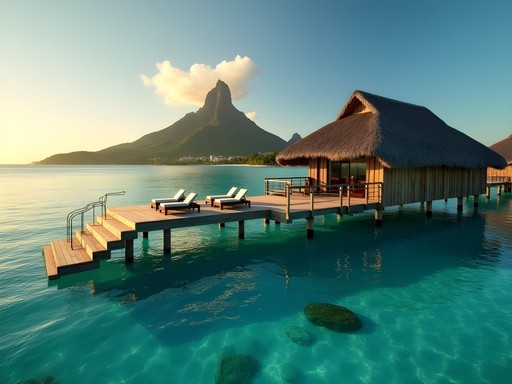
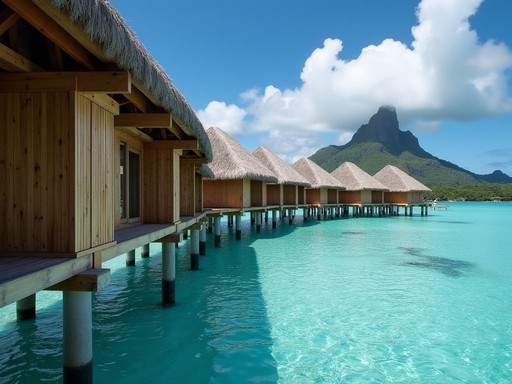
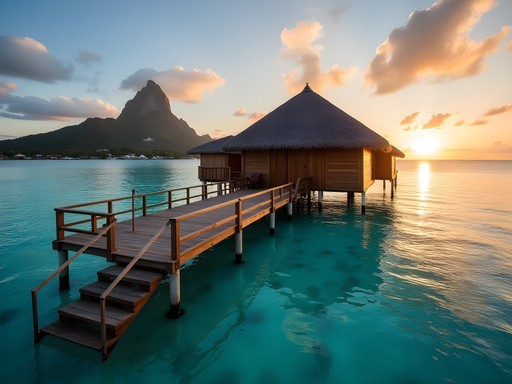
Comments
journeybackpacker
Just booked my tickets after reading this! Can't wait to see those electric blue waters in person!
freetime
Wow, never knew Bora Bora had so much adventure beyond the honeymoon stuff! Those manta rays look incredible!
Sage Dixon
Right? I always thought it was just overwater bungalows and cocktails. The hiking options look particularly amazing!
freetime
Totally! Have you been? I'm thinking about going next year but worried it's too expensive.
Sage Dixon
I went in 2024! It is pricey but worth saving for. Pro tip: book activities in advance and stay in a pension instead of resort for a few days to save money. The local experiences are actually better!
Lillian Diaz
Olivia, you absolutely nailed the essence of Bora Bora beyond the luxury resorts! I backpacked through French Polynesia last year on a budget (yes, it's possible!) and Bora Bora was actually my favorite stop precisely because of these adventures. For anyone going, I'd add that the public boat taxi is a fraction of the cost of private tours and can get you to many of these same snorkeling spots if you're comfortable exploring independently. The locals at the small grocery store near Vaitape gave me better tips than any guidebook! And the sunset hike to the WWII cannons offers nearly the same views as the more difficult Mount Otemanu climb if you're short on time or not up for the big hike. Can't wait to go back and try that electric ray encounter!
escapelegend
Heading to Bora Bora for our honeymoon in November! Is the snorkeling with sharks really safe for beginners? My wife is a bit nervous...
Lillian Diaz
Totally safe! The reef sharks are used to tourists and completely uninterested in people. I'm actually more afraid of swimming pools than I was of those sharks, haha! Your guide will keep you in shallow areas and the visibility is incredible. Perfect for beginners!
Riley Griffin
We took our kids (12 and 14) to Bora Bora last summer and followed your kayaking route through the lagoon! The guided botanizing kayak tour was perfect for our family - active enough to keep the teenagers engaged but not so strenuous that we couldn't all enjoy it. Our guide showed us how to spot octopus hiding among the coral which became a family competition. The kids also loved the twilight electric ray encounter, though my wife was a bit nervous at first. We used our underwater camera and got some amazing footage. One tip: book the kayak tour early in your trip because if it gets canceled due to weather (happened to us the first time), you'll have time to reschedule!
escapelegend
Did your kids find it scary swimming with the rays? My daughter (10) wants to try but I'm not sure if it's age-appropriate.
Riley Griffin
Not at all! The guides are super careful and keep everyone at a comfortable distance. My daughter was nervous at first but ended up being braver than me! They provide life vests for kids too.
dreamone
Those manta ray photos are incredible! Adding this to my bucket list right now.
beachclimber
Just got back from Bora Bora last month and did the Mount Otemanu hike! Wish I'd read this before going - we tried without a guide first (bad idea) and had to turn back halfway. Ended up booking a local guide the next day who showed us the proper trail. The view from even halfway up is INSANE though. Those electric blue waters against the green mountains... no photo does it justice. Definitely bring proper hiking shoes - I saw people trying in flip flops!
journeybackpacker
Did you need serious hiking gear? Planning my first trip there and wondering what to pack!
beachclimber
Nothing super technical, but definitely sturdy shoes with good grip. The trail gets slippery in parts. A hat and sunscreen are absolute musts too - that sun is brutal!
freeace
That lagoon looks unreal! Those blues don't even look possible!
cityguy
Heading to Bora Bora for our honeymoon in December - is it worth bringing our own snorkel gear or better to rent there?
vacationguy
Bring your own mask and snorkel for sure! The rental ones never fit quite right. Fins you can easily rent there.
Kimberly Murphy
Olivia, this is exactly the kind of Bora Bora content we need more of! I visited last year and was blown away by the adventures beyond the bungalows. The kayak botanizing was my absolute favorite - our guide showed us these tiny coral formations that look like underwater flowers! I'd add that the night snorkeling is worth considering too, completely different ecosystem comes alive. I used my waterproof camera which was perfect for capturing both day and night underwater scenes. For anyone planning a trip, definitely reserve the lagoon safari at least 2 weeks in advance - they book up quickly during high season!
redphotographer
Night snorkeling sounds amazing but also a bit scary! Did you see sharks?
Kimberly Murphy
Yes, but only reef sharks which are completely harmless! They're actually quite shy and usually swim away. The guides are incredibly knowledgeable about marine life behavior and safety.
Venture X
Premium card with 2X miles, $300 travel credit, Priority Pass